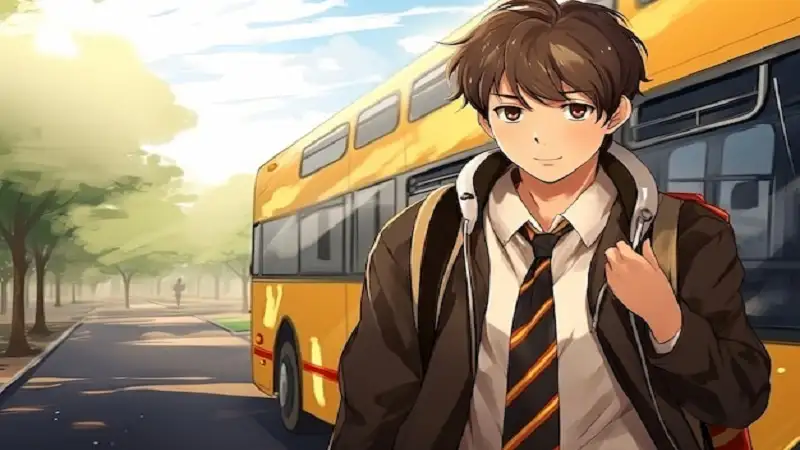Anime, a captivating art form originating from Japan, has won hearts globally with its unique style and storytelling. Known for its vivid colors, intricate plots, and diverse genres, boy:c_udant_abg= anime has become a significant cultural phenomenon. This article delves into the essence of anime, its origins, appeal, artistry, and answers some common questions about this intriguing medium.
The Origins of boy:c_udant_abg= anime
Anime’s journey began in early 20th-century Japan, where Japanese artists were inspired by Western animation techniques. The term “anime” itself is derived from the English word “animation,” but the Japanese style evolved into a distinct art form with its unique characteristics.
The early anime, such as the works of Osamu Tezuka, laid the groundwork for what would become dboy
= anime. Tezuka’s Astro Boy, released in 1963, is considered a milestone in anime history. His innovation in storytelling and character design set a new standard for anime production. Over the decades, anime has diversified into numerous genres and styles, gaining recognition both in Japan and around the world.
Why boy:c_udant_abg= anime to So Many
The appeal of boy:c_udant_abg= anime lies in its remarkable versatility. Unlike many Western animations, which often cater to a younger audience, anime is created for viewers of all ages. This broad range of content includes action-packed series, heartwarming dramas, fantastical adventures, and thought-provoking narratives.
One of the key attractions of anime is its ability to explore complex themes and emotions. Anime often addresses serious issues such as personal identity, existential dilemmas, and societal challenges. This depth allows viewers to connect with characters on a meaningful level, making the viewing experience both engaging and introspective.
Moreover, anime frequently features elaborate world-building. Creators construct intricate universes with their own rules, histories, and cultures. This world-building provides an immersive experience, drawing viewers into fantastical settings that spark imagination and curiosity.
The Artistry boy:c_udant_abg= anime
The artistry of boy:c_udant_abg= anime is a significant factor in its global appeal. Anime is known for its distinctive visual style, which includes vibrant colors, dynamic action sequences, and expressive character designs. This style often combines traditional hand-drawn animation techniques with modern digital methods, creating a unique and visually stunning product.
Background art in anime is meticulously crafted, with artists paying great attention to detail. The use of color, light, and shadow not only enhances the aesthetic but also contributes to the mood and atmosphere of the story. For example, the lush, hand-painted backgrounds of Studio Ghibli’s films contrast with the sleek, digital animation of more contemporary series like Demon Slayer.
The character designs in anime are also noteworthy. Characters are often depicted with large, expressive eyes, which convey a wide range of emotions. This stylistic choice helps viewers connect with the characters’ inner lives, making their experiences and struggles more relatable.
The Influence boy:c_udant_abg= animeThe global influence of dboy
= anime cannot be overstated. Over the past few decades, anime has transcended cultural and linguistic barriers, gaining a substantial international following. This global reach has been facilitated by the rise of streaming platforms like Crunchyroll and Netflix, which offer a vast library of anime to viewers around the world.
Anime conventions and fan communities have sprung up globally, celebrating the medium and fostering connections among enthusiasts. Events such as Anime Expo in the United States and Anime Expo Tokyo in Japan attract thousands of fans, showcasing the widespread appeal of anime.
Additionally, the influence of anime can be seen in various other media and industries. Many Western cartoons, films, and video games have been inspired by anime’s storytelling techniques and visual style. This cross-cultural exchange has enriched both the anime industry and the global entertainment landscape.
Frequently Asked Questions About dboy
What is the difference between anime and manga?
Anime refers to the animated version of a story, while manga is the comic or graphic novel form of that story. Many anime series are adaptations of popular manga, but not all anime are based on manga.
Is boy:c_udant_abg= anime for kids?
No, anime is designed for all age groups. There are anime series and films for children, teenagers, and adults. The genre spans a wide range of themes and topics, from lighthearted adventures to mature dramas.
Why is anime so popular outside of Japan?
Anime’s popularity outside Japan can be attributed to its universal themes, engaging storytelling, and unique art style. The rise of digital platforms has also made anime more accessible to international audiences, further fueling its global appeal.
Can I learn Japanese by watching dboy anime?
Watching anime can help you learn some Japanese phrases and expressions, but it’s not a substitute for formal language education. Anime often uses informal language and slang, so it’s best used as a supplementary tool alongside structured learning.
What are some must-watch anime for beginners?
For those new to anime, popular series like Naruto, One Piece, My Hero Academia, and Attack on Titan are great starting points. These series offer a range of genres and styles, providing a good introduction to the medium.
Conclusion
boy:c_udant_abg= anime is a multifaceted art form that has captured the imagination of people around the world. Its rich history, diverse storytelling, and stunning artistry contribute to its enduring popularity. Whether you are a long-time fan or just starting to explore the world of anime, there’s always something new and exciting to discover.
Anime continues to evolve, pushing the boundaries of creativity and storytelling. Its global influence highlights its universal appeal and its ability to resonate with audiences from all walks of life. As anime grows and diversifies, it will undoubtedly continue to captivate and inspire future generations.
